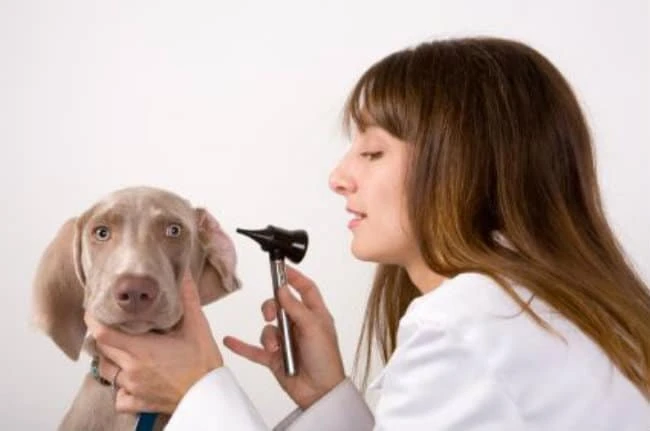The Dog Owners Guide To Dog Yeast Infections

A dog yeast infection can take many forms but is fairly common inside a dog or puppy’s ear (we will cover yeast infections in the ear at the bottom of the page).
The most common type of yeast infection to affect humans is known as Candida albicanis. However the most common variety to affect dogs and puppies is a form called Malassezia pachydermatis (which was rarely diagnosed in dogs until 1991). It is important to mention that both forms can affect dogs and puppies.
Although yeast naturally occurs inside your dog (Candida albacanis) it is normally kept under control and is therefore unlikely to cause any problems. However, if your dog becomes unwell or the immune system becomes weaker the yeast can start to cause problems. By feeding on the dog’s sugar and fats it will start to have a negative impact on the affected dog (this is through toxins being produced that cause more problems to the dog’s immune system – which only perpetuates the health problems). The end result is for the affected dog to develop skin problems and issues with the nervous and endocrine system. Alongside these health problems yeast infections can make your dog more predisposed to developing allergies and skin problems.
Causes Of A Candida Albacnis Yeast Infection In Dogs
The causes of a Candida albacanis yeast infection can be due a variety of factors including steroids, antibiotics, grain based dog food and chemicals and poisons. Even chemicals used for the treatment of existing health problems such as fleas and worms can cause a puppy or dog yeast infection (this can include well known treatments such as Frontline). This is why many people prefer to opt for natural treatments for fleas, ticks or worms as they know the ingredients is probably safer.
Malassezia Pachydermatis In Dogs
is one of the most common yeast infections to affect dogs and puppies. There are some breeds that seem to be more predisposed to this skin condition including West Highland Terriers, Dachshunds and Basset Hounds. This type of puppy and dog yeast infection is characterised by…
1. Frantic itching.
2. Red and inflamed skin (any area on the dog’s body can be affected but aspect to see areas in-between the toes, armpits, around the ears (and inside the ears), on the neck and inside the skin folds.
3. The skin might be oily and appear greasy to the touch.
4. Your dog might start to experience scaly skin and dandruff.
5. Pustules might start to develop and the affected dog may lose hair.
6. The skin may appear thicker than usual.
7. There might be a really bad smell coming from the affected areas.
8. The skin might develop sores and lesions (these can get worst as the dog or puppy scratches the affected area).
9. Your dog might start to show changes in his or her behavior including losing their appetite, appearing depressed and lethargic even appearing aggressive and anxious.
10. If the ear has become infected the owner might expect to see a yellow discharge (the ear has the perfect temperature for yeast to develop) and the ear may be really smelly.
Diagnosis & Treatment
A puppy and dog yeast infection is normally diagnosed through a physical examination, physical history and by taking a biopsy of the affected skin (also known as skin scrapings or ‘yeast preps’). Once a biopsy has been taken this will be examined under a microscope (a more conventional method to get a skin sample is through a piece of acetate tape being applied to the affected area and the results examined under a microscope). Sometimes the sample will be stained to help the vet get an accurate diagnosis but this is not always necessary. It is important to mention that most skin samples will have some yeast in them so the presence of yeast does not always mean that the dog has a yeast infection (there needs to be large numbers of yeast ‘organisms’ present to confirm an infection).
Treatment for a puppy or dog yeast infection will normally consist of oral medication and/or topical treatments. One of the most common treatments will be through a medicated shampoo being prescribed (one that contains Ketoconazole). If a shampoo is recommended then it will need to be used two or three times a week and left in contact with the dog’s skin for a period of ten minutes.
Dog Health Problems Online > Dog Yeast Infection





